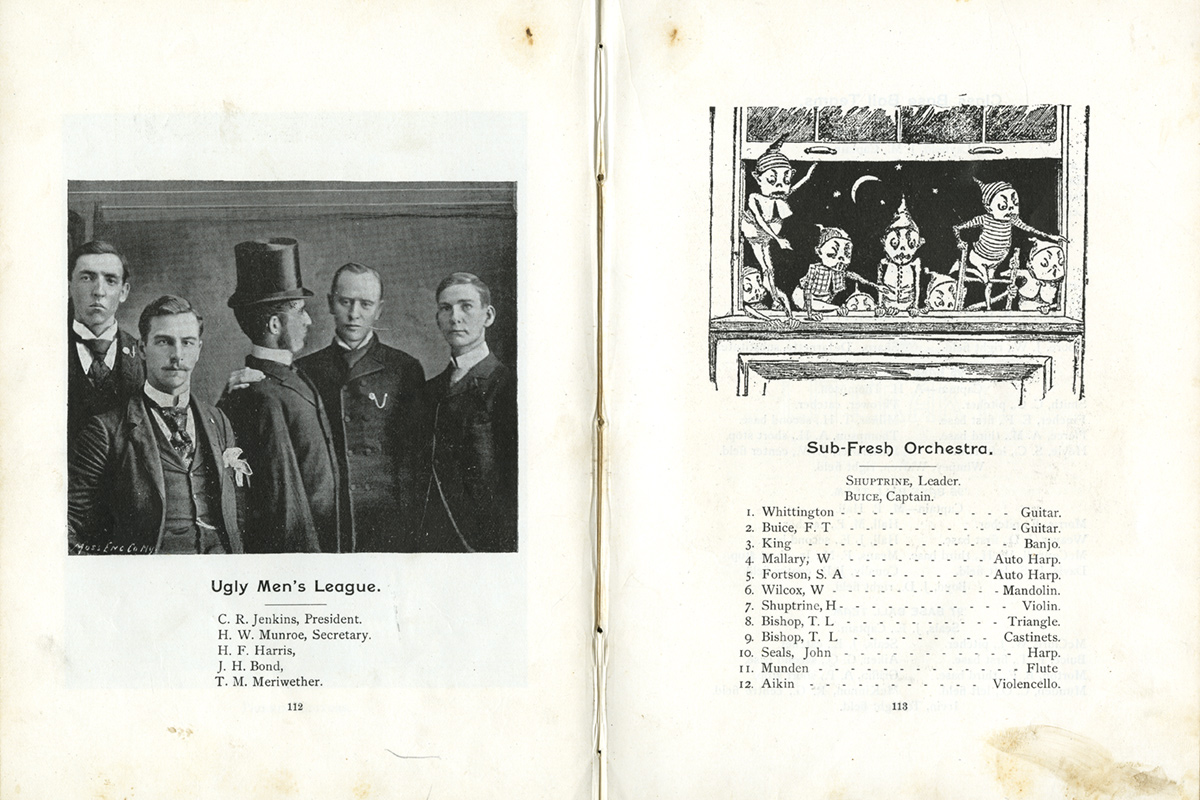The Hardback Years

Photo courtesy MARBL
Right now, chapters of Emory life are continuously unscrolling on the digital pages of Facebook, in the moving pictures of YouTube, in staccato bursts on Twitter feeds, and on countless websites that mark time with daily or hourly updates.
It’s easy to forget that, for more than a century, the university’s academic years were celebrated in a more concrete format: annual yearbooks. Founded by students in 1893, Emory’s first yearbook, the Zodiac, chronicled scholarly and social life on campus, including a snapshot of each class—a brief “history,” class chant or song, and students’ names and hometowns. The annual, later called Campus, also highlighted clubs and societies, fraternities, the Glee Club, athletic teams, and even oddball organizations such as the Ugly Men’s League (Emory Magazine readers with information about this little-known group are encouraged to share with the editors).
As decades passed, the yearbook kept pace with Emory’s social and cultural evolution. The 1920s brought a popular section titled “Southern Beauties,” featuring some of the student body’s female friends and companions and showing off the styles of the day.
Editions from the 1940s and 1960s reflect wartime changes; following the famed Woodruff gift of 1979, the generosity of the Woodruff Foundation was noted in the Campus pages, along with a tongue-in-cheek song referring to Emory as “the Coca-Cola School.”
The yearbook ceased publication in 1999, but for university alumni and friends, its volumes have found new life in the digital realm. Emory Libraries staff have digitized the collection to make it available electronically, a project featured in a special exhibit now on view in the Robert W. Woodruff Library. “Gone Digital: 100+ Years of Emory Yearbooks Now Online” will run until March 8, 2015, in the Level 2 gallery space.
The exhibit offers a kiosk where visitors can access the yearbooks and a narrative on how they have marked various campus and societal changes over time. There also is an oversized image from one of the yearbooks with face cutouts so that visitors can pose in the fashions of yesteryear, and take pictures if they wish—no doubt snapping with cell phones so that the funny, nostalgic images can instantly be posted on Facebook.



